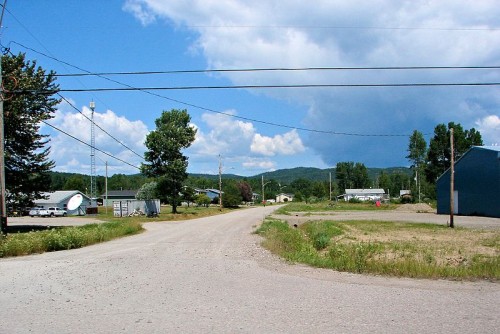Pic Mobert North and Pic Mobert South are two First Nations communities approximately 25 minutes west of White River.
There are actually two separate communities within the Pic Mobert First Nation – Pic Mobert North and Pic Mobert South. Approximately 80 kilometres east of Marathon, the two communities have a population of about 400. I didn’t venture in since it’s off the main road and I still had hours of driving to go.
According the band’s website, the traditional name of the community is Netamisakoming, which in Ojibway describes the location of the settlement as being on the first lake past the big lake. The settlement was then named Montizambert when it served the CPR, and was shortened to Mobert in use since the 1970s. The towns are on White Lake, into which the Pic River flows, and used to be part of the Pic Heron Bay Band.
Mobert is a small community with the essentials, including gas, a health clinic, a rink, and police.
Pic Mobert hosts their annual pow-wow on the last weekend in July.
I did not venture into town so if you have any further information or any pictures, please help me add to this. Email me at info (at) highway11 (dot) ca.
